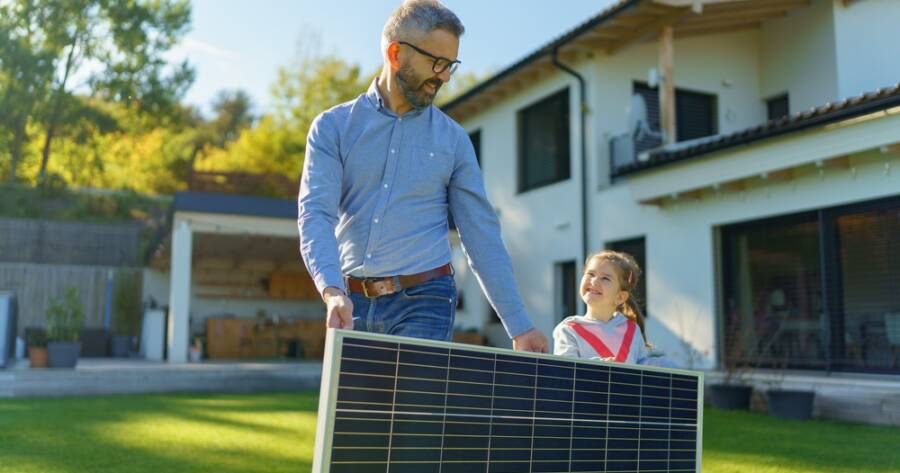Sustainability starts at home. With growing concerns about climate change, energy use, and environmental impact, many homeowners are turning to eco-friendly upgrades to reduce their carbon footprint and create healthier living spaces. The best part? You don’t have to build a brand-new house to go green. From small changes to more significant investments, there are many ways to make your home more sustainable—while also saving money in the long run.
1. Switch to LED Lighting
One of the easiest and most affordable eco-upgrades is replacing incandescent or CFL bulbs with LED lights. LED bulbs use up to 80% less energy and last significantly longer than traditional bulbs, reducing both electricity use and waste.
Bonus: They come in a variety of colors and brightness levels, making it easy to create the ambiance you want.
2. Install a Smart Thermostat
Heating and cooling account for a large portion of home energy use. A smart thermostat helps you manage your home’s temperature more efficiently by learning your habits and adjusting settings automatically.
Why it matters: Smart thermostats can significantly reduce energy consumption by avoiding unnecessary heating or cooling when you’re not home, potentially saving you hundreds of dollars a year.
3. Seal Windows and Doors
Drafty windows and doors can lead to major energy loss. Sealing gaps with weatherstripping or caulk helps maintain indoor temperatures, reduces the load on your HVAC system, and cuts down on energy bills.
Eco Tip: Upgrade to double- or triple-pane windows for better insulation and long-term savings.
4. Install Low-Flow Fixtures
Water is a precious resource, and reducing consumption is a key part of sustainable living. Replacing old faucets, showerheads, and toilets with low-flow models can drastically cut your water use without sacrificing performance.
Pro Tip: Look for WaterSense-labeled products, which are certified to be both efficient and effective.
5. Opt for Energy-Efficient Appliances
When it’s time to replace old appliances, choose ENERGY STAR-rated models. These appliances are designed to use less energy and water, lowering utility bills and your environmental impact.
Consider upgrading: Refrigerators, dishwashers, washing machines, and water heaters are among the biggest energy consumers in most homes.
6. Use Eco-Friendly Paints and Materials
Many conventional paints and building materials contain volatile organic compounds (VOCs) that can affect indoor air quality. When remodeling or decorating, opt for low-VOC or VOC-free paints and sustainable materials like bamboo, cork, or reclaimed wood.
Why it helps: These materials are healthier for your family and better for the environment.
7. Compost and Recycle
Cut down on waste by setting up a home composting system for food scraps and yard waste. Composting reduces landfill contributions and creates rich soil for your garden. Pair this with a robust recycling system to ensure materials like paper, plastic, and glass are properly reused.
8. Go Solar
Installing solar panels is one of the most impactful upgrades you can make. While the upfront cost may be higher, many homeowners recoup the investment through tax credits, rebates, and long-term savings on energy bills.
Added benefit: You may even be able to sell excess energy back to the grid, making your home even more cost-efficient.
9. Landscape Smartly
Sustainable landscaping can reduce water usage and support local ecosystems. Choose native plants that require less maintenance and water, install rain barrels to collect water for irrigation, and use mulch to retain soil moisture.
Small Changes, Big Impact
Making your home more sustainable doesn’t have to be overwhelming or expensive. Even small, gradual upgrades can lead to significant environmental and financial benefits over time. Whether you’re sealing a drafty window or installing solar panels, every step toward a greener home is a step toward a more sustainable future—for your household and the planet.

